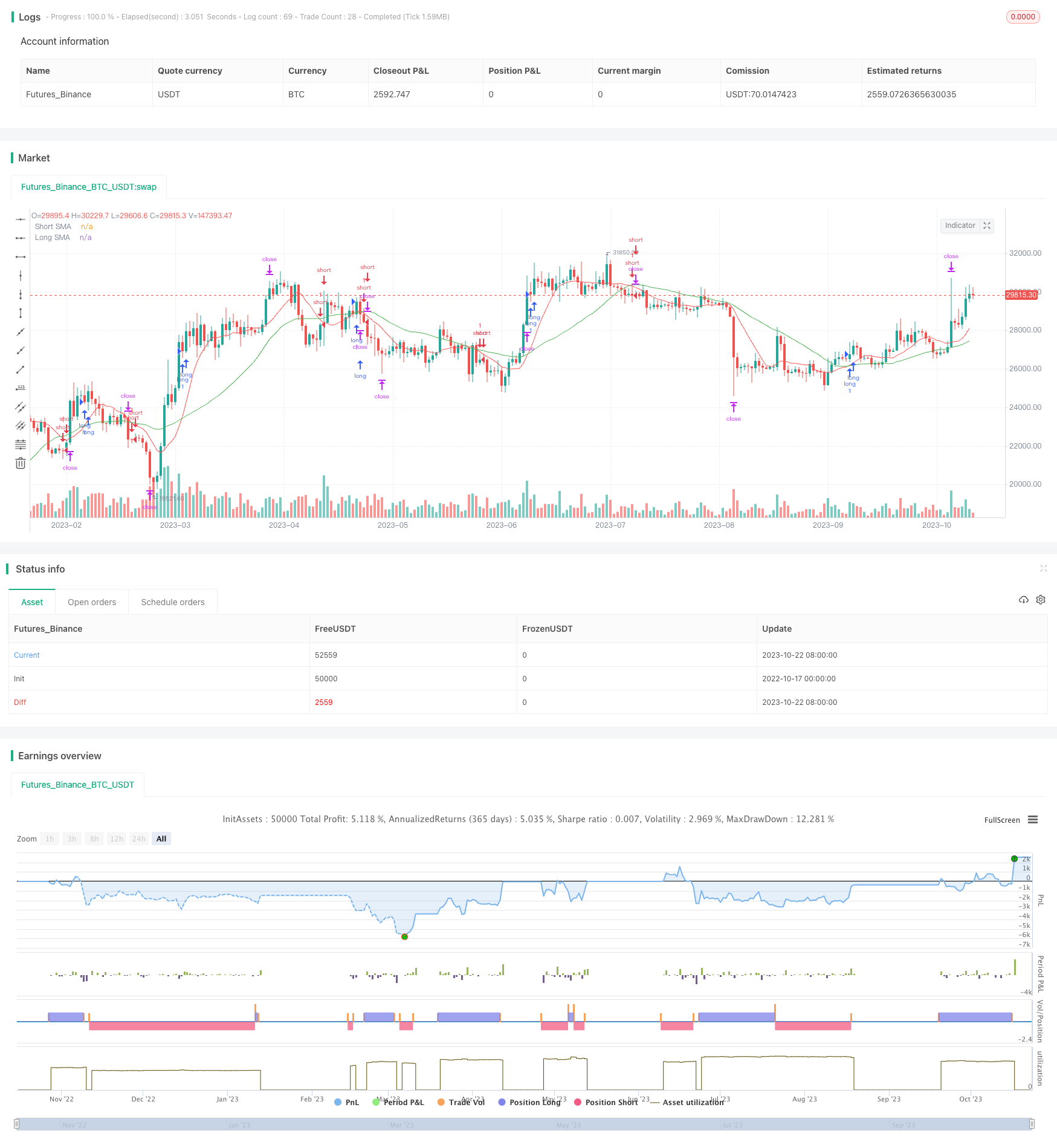
概述
该策略运用简单移动平均线的金叉死叉进行判断,顺势而为,及时抓住市场趋势转换的时机。当短期均线上穿长期均线时做多,当短期均线下穿长期均线时做空,属于典型的趋势跟踪策略。
原理解析
计算10日简单移动平均线shortSMA和30日简单移动平均线longSMA
当shortSMA上穿longSMA时,产生买入信号
当shortSMA下穿longSMA时,产生卖出信号
RSI大于50时才能产生买入信号,小于50时才能产生卖出信号,避免假突破
采用ATR止损,止盈移动追踪
该策略主要运用两个移动平均线的交叉作为 entry timing,判断趋势转折点。短期均线能更快反映价格变化,长期均线提供支持和阻力。当短期均线上穿长期均线时,说明价格开始上涨,此时做多;当短期均线下穿长期均线时,说明价格开始下跌,此时做空。同时结合RSI指标过滤假突破。ATR止损止盈追踪价格,优化资金管理。
优势分析
操作简单,容易理解学习
顺应市场趋势而为,及时捕捉市场的转折点
双均线交叉是经典且有效的趋势判定方法
合理止损止盈,降低个别波段的损失
RSI指标可有效过滤假突破,减少交易风险
无需预测后市,只需跟随趋势即可获利
风险分析
双均线容易产生错误信号,可能造成不必要的损失
双均线的延后性,无法及时捕捉趋势反转点
盲目跟随趋势会放大亏损,应适当控制仓位规模
没有完全过滤震荡行情,容易被套牢
参数设置不当会增加交易频率,降低盈利水平
可以通过选择合适的参数组合,引入其他过滤指标,适当控制仓位规模等措施来降低风险。
优化方向
优化移动平均线参数,提高信号准确率
增加其他指标判断,如MACD、布林线等,提高策略胜率
结合趋势判断指标,减少震荡行情交易
优化止损止盈策略,缩小单笔亏损,扩大单笔盈利
优化资金管理,不同行情采用不同仓位
针对趋势和震荡行情制定不同交易策略
通过测试不同参数组合,引入辅助指标判断趋势和筛选信号,不断优化止损止盈策略,可以持续改进策略表现。
总结
该策略采用经典的移动平均线交叉系统,判断价格趋势转折点进行交易,非常适合初学者学习。但也存在一些缺点需要注意,如容易产生错误信号,延迟识别趋势反转点等。通过不断测试和优化参数设置,引入其他判断指标,可以提高策略的稳定性和profitability。关键是要控制好仓位规模,遵循趋势交易的原则,将损失控制在可承受范围,让利润最大化。总的来说,该策略思路清晰易懂,值得进一步研究改进,以提升实战交易效果。
/*backtest
start: 2022-10-17 00:00:00
end: 2023-10-23 00:00:00
period: 1d
basePeriod: 1h
exchanges: [{"eid":"Futures_Binance","currency":"BTC_USDT"}]
*/
// This source code is subject to the terms of the Mozilla Public License 2.0 at https://mozilla.org/MPL/2.0/
// © Glenn234
//@version=5
strategy("MA cross strategy", shorttitle="macs", overlay=true)
// Create indicator's
shortSMA = ta.sma(close, 10)
longSMA = ta.sma(close, 30)
rsi = ta.rsi(close, 14)
atr = ta.atr(14)
// Crossover conditions
longCondition = ta.crossover(shortSMA, longSMA)
shortCondition = ta.crossunder(shortSMA, longSMA)
// trade conditions
if (longCondition)
stopLoss = low - atr * 2
takeProfit = high + atr * 2
strategy.entry("long", strategy.long, when = rsi > 50)
strategy.exit("exit", "long", stop=stopLoss, limit=takeProfit)
if (shortCondition)
stopLoss = high + atr * 2
takeProfit = low - atr * 2
strategy.entry("short", strategy.short, when = rsi < 50)
strategy.exit("exit", "short", stop=stopLoss, limit=takeProfit)
// Plot SMA to chart
plot(shortSMA, color=color.red, title="Short SMA")
plot(longSMA, color=color.green, title="Long SMA")